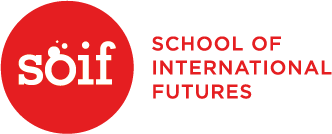The second instalment from the SOIF 2019 Retreat, at Hartwell House, in Buckinghamshire, when policy-makers and practitioners come together to learn with us about using futures to improve outcomes. Chris Skelly has had to roll Days 2 and 3 in his story on Medium–because the facilitator’s schedule at the Retreat is a demanding one. Here’s an extract:

Complexity is the primary intellectual challenge for everyone. Experts and leaders too. It is making the achievement of “long-term goals in a shifting pluralistic, ambitious and novel world” increasingly more challenging.
Where experts feel safe: The familiar, predictable, and known.
Where leaders add value: The unfamiliar, uncertain, unknown.
Successful leadership and decision-making is required to shape the future. You want to shape the future, because this is the best way of getting to your desirable future, i.e. achieving your strategic vision.
This requires us to combine creative and analytical thinking.
It is not easy or natural for most of us.
A good way of thinking about foresight is that it is composed of 3 components:
- Trends — long rolling processes (think big waves as you swim to shore), ageing population, environmental degradation, climate heating, ageing infrastructure…
- Events/ideas ‘coming at us’ — cyber systems, big data, CRISPR technologies…
- Decisions we make — this defines our ‘degree of agency’, it is worth thinking explicitly about this (I never have).
Foresight tools
- essential for strategic insights
- provide space for discourse
- bring attention to ideas, trends, developments that are not in daily sight
- However — this is mostly about a process, a journey, that you take clients from the ‘familiar’ to the ‘unfamiliar’ — moving them and you from comfortable zones of discussion to areas of discomfort.
Foresight — as a process of thinking— challenges conventional thinking and it involves four stages:
- scoping — divergent exercise creating choices
- ordering/prioritising
- implications — convergent exercise is about making choices
- integrating futures
Don’t mix divergent and convergent exercises; you don’t want to start reducing options before you have got them all out on the table.
Creating impact
To create impact with foresight, like all other decision-supporting activities of any importance, it takes time (you need thinking time and time to work with your clients — internal or external), resources (staff time in particular) and political capital (to bring people and organisations along with you , or even to the table for the first time).
One of the discussions identified that:
- making change is challenging when there aren’t clearly defined goals
- when mental models remain hidden
- when there isn’t any ‘space’ discourse in the decision-making process it becomes hard to shape it and focus in a useful way
These problems are common to most organisations, and it often relates often to leadership style. For example, a leader may say that “they will not take this legislation forward unless you can explain it to the public”. Without a process for building a common discourse between ‘they’ and ‘you’, you can get stuck quite quickly.
Photos by Chris Skelly: CC BY-NC-ND.
